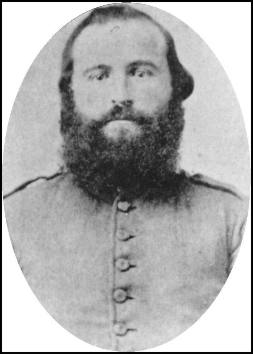James M. McIntosh facts for kids
Quick facts for kids
James McQueen McIntosh
|
|
|---|---|

James M. McIntosh
|
|
| Born | 1828 Fort Brooke, Florida Territory |
| Died | March 7, 1862 (aged 33–34) Benton County, Arkansas |
| Place of burial | |
| Allegiance | |
| Service/ |
|
| Years of service | 1849–1861 (USA) 1861–1862 (CSA) |
| Rank | Brigadier General (CSA) |
| Commands held | McIntosh's Cavalry Brigade |
| Battles/wars | American Civil War |
| Relations | Great-great-nephew of Lachlan McIntosh Union Army General John Baillie McIntosh |
James McQueen McIntosh (born 1828, died 1862) was an American soldier. He became a high-ranking general in the Confederate Army during the American Civil War. People knew him as a brave and well-liked leader of cavalry (soldiers on horseback). He died fighting in the Battle of Pea Ridge.
Contents
Early Life and Family
James McIntosh was born in 1828 at Fort Brooke. This place is now known as Tampa, Florida. His father was serving in the United States Army at the time.
James had a younger brother named John Baillie McIntosh. John later became a general for the Union Army. The McIntosh family had a history of military service. Their great-great uncle was General Lachlan McIntosh, a commander in the American Revolutionary War. James's father, a colonel, was killed in battle during the Battle of Molino del Rey.
Military Training and Early Career
James McIntosh attended the United States Military Academy at West Point, New York. He graduated in 1849. After West Point, he first served as a second lieutenant in the infantry (foot soldiers).
Later, he joined the cavalry and worked on the Western frontier. He was stationed at Fort Smith National Historic Site in Arkansas. In early 1861, several Southern states, including his home state of Florida, began to leave the United States. This period was called secession.
Joining the Confederate Army
When the Civil War started, James McIntosh left the U.S. Army. He joined the Confederate side. He became a colonel in charge of the 2nd Arkansas Mounted Rifles.
McIntosh fought in the Battle of Wilson's Creek in August 1861. He was known for being brave and daring. However, he was also impulsive and sometimes reckless. He preferred to lead his men from the front lines.
Battle of Chustenahlah
In late 1861, Confederate troops tried to control the Indian Territory. They wanted to stop Native American groups who supported the Union. Colonel Douglas H. Cooper planned an attack with McIntosh. Their target was an enemy camp at Battle of Chustenahlah.
McIntosh left Fort Gibson on December 22 with 1,380 soldiers. On Christmas Day, he learned that Cooper's forces were delayed. Despite being outnumbered, McIntosh decided to attack the next day. On December 26, he attacked the camp. His forces completely defeated Chief Opothleyahola's group of Creeks and Seminoles.
Because of this important victory, McIntosh was promoted to brigadier general in January 1862.
Death in Battle
General McIntosh commanded a brigade (a large group of soldiers) at the Battle of Pea Ridge. He was part of the division led by General Benjamin McCulloch. During the battle, General McCulloch was killed by Union soldiers.
Shortly after McCulloch's death, McIntosh took command of the division. He was leading an advance when he was hit by a bullet and killed. This happened less than fifteen minutes after General McCulloch died.
James McIntosh is buried at the Fort Smith National Cemetery. A marble memorial for Unknown Confederate Dead honors him. It also remembers Brigadier General Alexander E. Steen, who died at the Battle of Prairie Grove.

